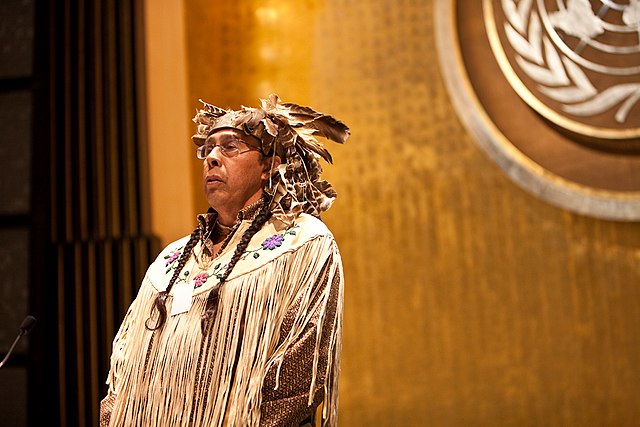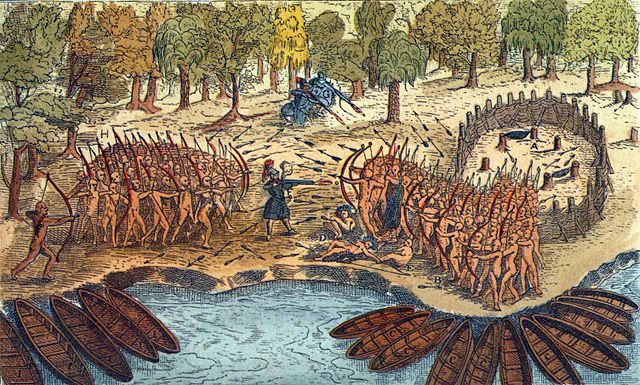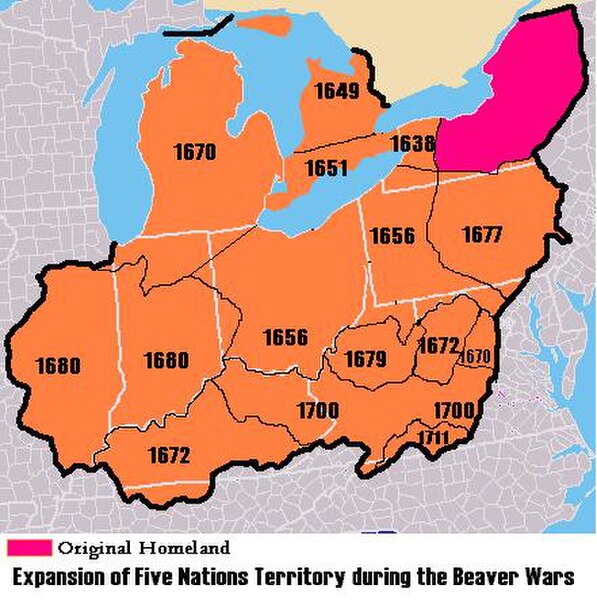The Onondaga people are one of the five original nations of the Haudenosaunee (Iroquois) Confederacy in the Northeastern Woodlands. Their historical homelands are in and around present-day Onondaga County, New York, south of Lake Ontario.
Todadaho Sid Hill, Traditional Chief of the Onondaga Nation at the United Nations Permanent Forum on Indigenous Issues
Sketch by Samuel de Champlain of his attack on an Onondaga village.
Iroquois Chiefs from the Six Nations Reserve reading wampum belts in Brantford, Ontario in 1871. Joseph Snow, Onondaga chief, is first on the left.
Rose Doctor, Onondaga people Wolf Clan, Clanmother
The Iroquois, also known as the Five Nations, and later as the Six Nations from 1722 onwards; alternatively referred to by the endonym Haudenosaunee are an Iroquoian-speaking confederacy of Native Americans and First Nations peoples in northeast North America. They were known by the French during the colonial years as the Iroquois League, and later as the Iroquois Confederacy, while the English simply called them the "Five Nations". The peoples of the Iroquois included the Mohawk, Oneida, Onondaga, Cayuga, and Seneca. After 1722, the Iroquoian-speaking Tuscarora people from the southeast were accepted into the confederacy, from which point it was known as the "Six Nations".
Photo of an Iroquois woman in 1898.
Engraving based on a drawing by Champlain of his 1609 voyage. It depicts a battle between Iroquois and Algonquian tribes near Lake Champlain, with interference by the colonialists.
Iroquois conquests 1638–1711
The four "Mohawk Kings" who travelled to London in 1710.








